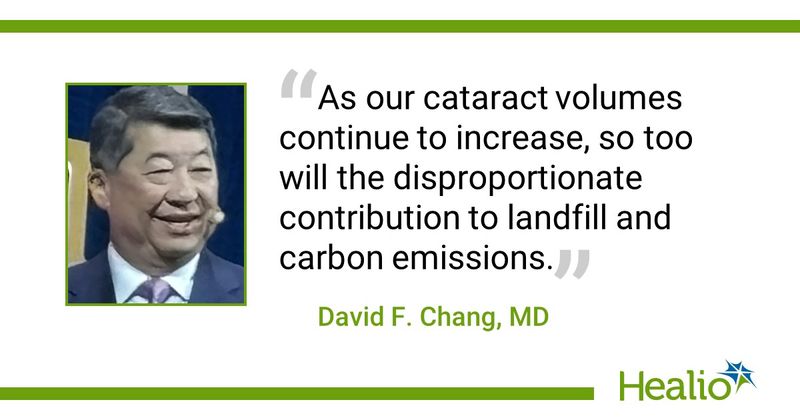Frugal innovation key to cataract surgery sustainability
Click Here to Manage Email Alerts
BOSTON — Cataract surgeons must embrace frugal innovation to meet growing demands without compromising sustainability, according to a speaker at the American Society of Cataract and Refractive Surgery meeting.
During the Charles D. Kelman, MD, Innovator’s Lecture, David F. Chang, MD, said that the biggest challenge facing cataract surgery in high-income countries will be access to care due to increased demand, a workforce shortage, and spending and the waste of resources, which contributes to climate change.

“Global health care, if it were a country, would rank No. 5 in terms of annual carbon emissions in the world,” he said. “As our cataract volumes continue to increase, so too will the disproportionate contribution to landfill and carbon emissions.”
Chang said a paradigm shift driven by frugal innovation is needed in cataract surgery, highlighting low-resource settings such as the Aravind Eye Care System in India.
One step Aravind takes is to reuse equipment and materials in the operating room, including surgical gowns, gloves, phaco cassettes, irrigation and aspiration tubing, irrigation bottles, cannulas, blades, sutures and intraocular drugs, which cannot be done in the United States.
The carbon footprint from cataract surgeries is 20 times higher in the U.S. and the U.K. compared with Aravind, mostly due to the disposal of supplies and drugs, Chang said. However, endophthalmitis rates were equal (0.004%) in 2 million consecutive cases in Aravind and more than 8 million cases pulled from the IRIS Registry during an overlapping time period.
Chang also highlighted previous findings that it was “perfectly safe” to reuse a single-use phaco tip up to 20 times.
“We are spending and throwing out 20 times as much to get no benefit that we can find, and this is infuriating,” he said. “But it’s also a reason for optimism because it means we could cut down on our spending and our waste without endangering patients.”
In the future, fully autonomous robotic cataract surgery developed with machine learning models driven by artificial intelligence holds promise.
“You would still have a surgeon on hand to monitor this, but the surgeon could monitor multiple surgeries doing this on routine cases,” Chang said. “Because it’s hardware and software, if you could perfect the system, you could now mass produce it and really scale this and make quality cataract surgery for routine cases available at a much lower price and lower cost than it would have cost to train and compensate an actual cataract surgeon to do this.”

